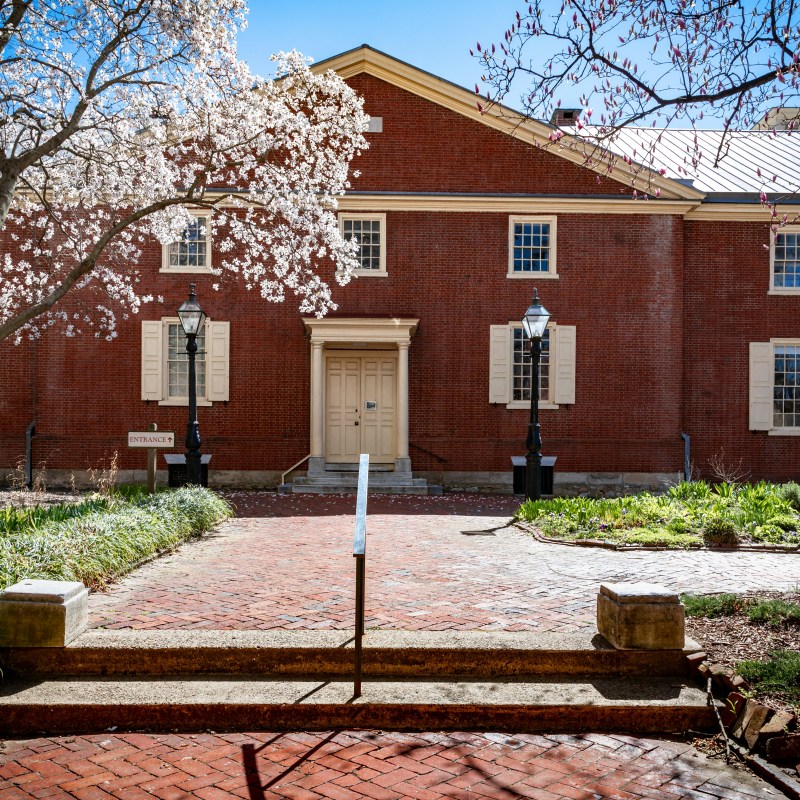
In the United States, we tend to admire buildings that live past their hundredth year.
Videos by TravelAwaits
Compared to historic districts around the world, our best-preserved old towns are few and far between. They’re also centuries younger than city centers from around the world.
From medieval Croatian villages to Japanese temples, the US doesn’t have quite the same hold on ancient architecture.
Still, many cities and towns across the US have fought hard to preserve their historic districts.
They want to maintain their connection to the past, showcase the region’s unique identity, and maybe even show a few tourists around. Though not quite as elaborate as Ren Fairs or reenactment villages, historic districts are educational, charming, and a deep-seated part of American culture—especially when national holidays roll around.
But which US cities have the oldest historic districts settled by Europeans? Let’s take a closer look at some of our nation’s most maintained and historically relevant neighborhoods. Some actually predate the arrival of English settlers.
New Castle, Delaware
Founded 1651
Shortly after founding areas of modern-day Brooklyn (including Bedford-Stuyvesant), Dutch colonial officer Peter Stuyvesant made his way to New Castle, Delaware.
This settlement changed colonial hands for decades, from the English to the Dutch. It was even briefly part of a New Sweden colony.
Over time, New Castle became an important capital in the fledgling state of Pennsylvania. Throughout the 1600s and 1700s, it steadily grew. In fact, some of the US’s Founding Fathers hung out in New Castle, including three of the signers of the Declaration of Independence.
Over time, Philadelphia replaced New Castle as a political capital. But locals didn’t let their historic district fall into disrepair. In the 1920s, multiple projects took off to renovate its old town.
Today, it remains a pristine encapsulation of life from the days of yore. From the cobblestone streets to the glass windowpanes, every detail transports you back centuries.
Visitors can explore dozens of pre-American homes that date back to the Georgian and Victorian eras. On the third Saturday of May, the entire town dresses up in colonial garb and opens their days to showcase the living past throughout the area.
Check out:
Charleston, South Carolina
Founded 1670
This city needs no introduction. It’s regularly listed alongside the most romantic, haunted, and historic cities in the US—and for good reason.
Much of its historic buildings have been painstakingly restored, including iconic spots like Rainbow Row.
Unlike other locations on this list, Charleston was founded as an English colony. It played a pivotal role in just about every major American conflict since it was founded, including the American Revolution and the Civil War. As a capital of the Antebellum South, there’s also an emphasis on colonial history from an African perspective.
Check out:
Lancaster, Pennsylvania
Founded 1729
Lancaster is a bustling city with skyscrapers—but don’t let that fool you. It’s also home to an amazing historic district.
The land was originally allotted to William Penn back in the late 1600s, then was slowly settled over the next decades. After that, it served as a brief capital of Pennsylvania, playing a pivotal role in the American Revolution and then the Civil War.
In fact, during the 1800s, it was one of the US’s most densely packed urban areas. That’s no longer the case, but Lancaster’s Historical Society has worked overtime to maintain its window to the past.
Old Town Lancaster has a whopping 578 buildings that date back to the 1800s (and a few to the 1700s).
In fact, you’ll have to choose between exploring the Lancaster Historic District and the Lancaster City Historic District. (Don’t worry, you can explore one and then check out the other in the same day.)
Check out:
St. Augustine, Florida
Founded 1556
Welcome to the oldest continuously inhabited city in the United States—that was settled by Europeans, at least.
Though it’s not quite as old as a few other Caribbean cities, there’s one huge reason St. Augustine has stayed on the map: its massive fort.
St. Augustine shifted between English, Spanish, and French control during the 1600s and 1700s. In fact, the state of Florida got its name from one conquistador who thought the area was an island—which he dubbed La Florida. In Spanish, that translates to ‘flowery’—a term that referred to the Spanish crown.
Given this area was a hotspot for Spanish conquistadors and settlers, there’s plenty of Spanish colonial architecture. While the Fort of St. Augustine draws plenty of visitors (and you should absolutely check it out), the small village also has a solid historic district.
Check out:
